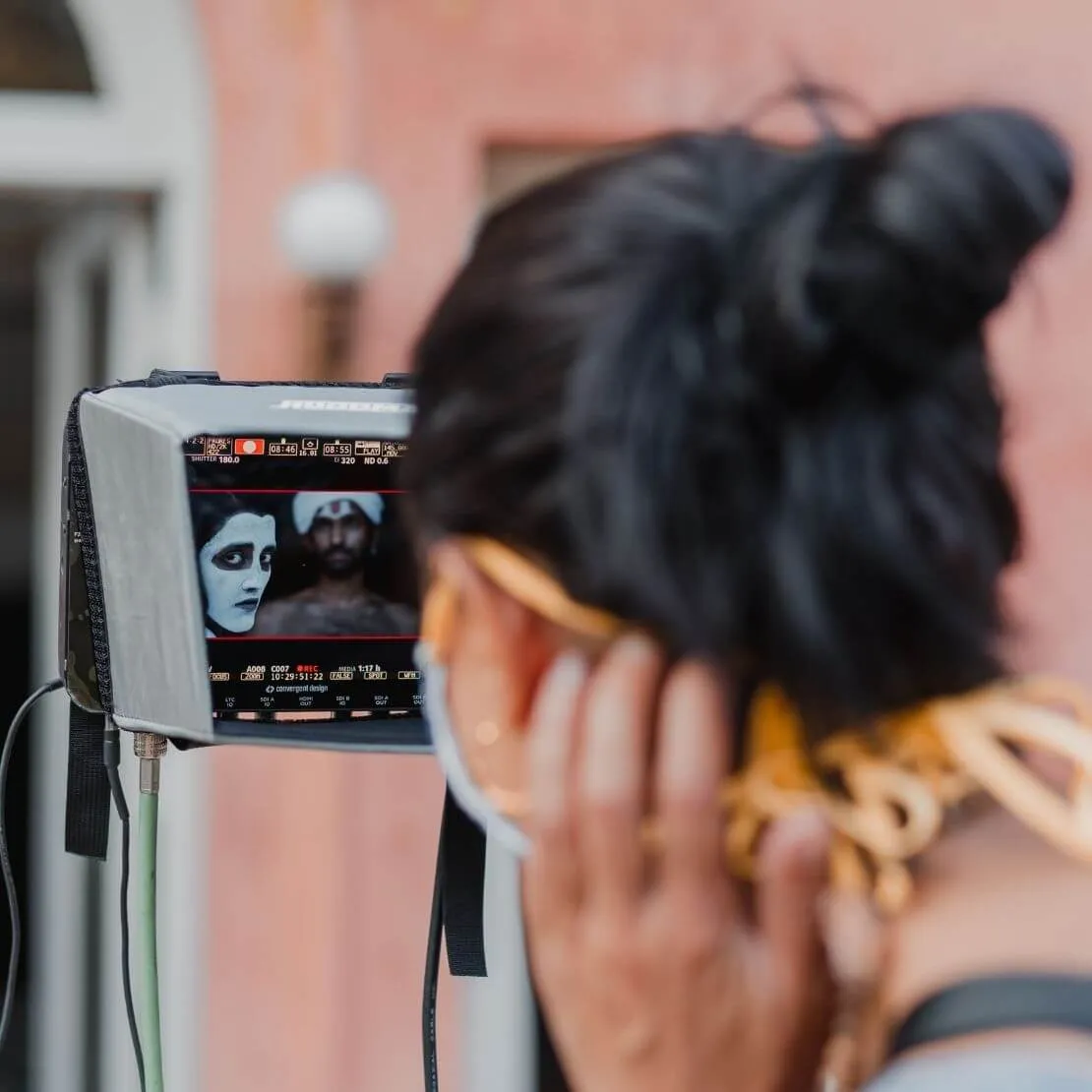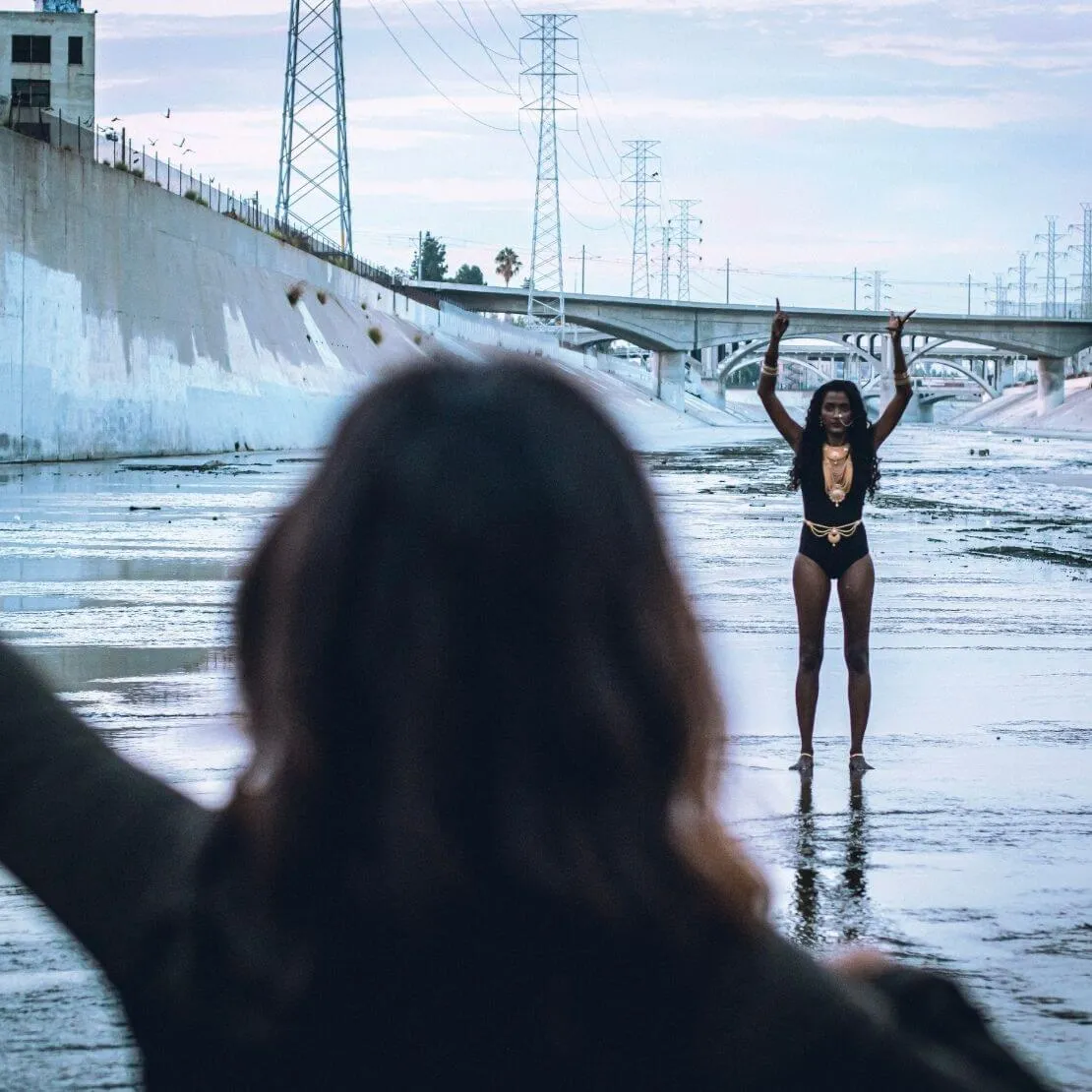Anjali Nayar’s video ft. Seema Hari unpacks colourism & patriarchy
“Remixes” in India were never considered cool, albeit popular, especially in Bollywood.
Older family members would complain about them destroying our culture, while younger kids would label them tacky.
Usually, I would stay away from a remodelled old song; I trust mother when she says, "It will never sound the same again."
But the first time I heard Closer, I knew instantly I had to make an exception. Nor did I make one, it was the only song I would listen to for the next three weeks.
A classic Punjabi boli, refurbished with bass, chords and strings, Khanvict's Closer is a poetic fusion between the old and the new. Much like the Punjabi diaspora itself, the song finds its feet both in Punjab and the West.
"The songwriting process started with recognising the sample from my childhood - I've heard my mom and aunts sing this at events, and of course, as a DJ, I've heard many renditions of this boli," shares Khanvict, aka Asad, who grew up listening to music legends like Nusrat Fateh Ali Khan, Abida Parveen, Mehdi Hassan, AR Rahman, Jagjit Singh among many others.
But, what makes the song universal is its video.
Written and directed by Anjali Nayar and starring South Asian dark-skinned icon Seema Hari, Closer's film is a treat to the eye. The first shot is, both obviously and beautifully, a 'close-up' of Seema's eyes, furious like the red bindi on her forehead, with her skin covered in Mehendi.
"Closer is the story of a young brown woman, Maya, who breaks out of the life expected of her. She doesn't measure up to what a good South Asian woman should be. The cyclic nature of the opening scene is reminiscent of the repetitive nature of her daily life and samsara, the larger cycle of birth and death without enlightenment," says Anjali.
We see Maya trapped in a society where her mother straightens her hair, and her skin is literally whitened - presumably to make her look more palatable.
Skin lightening is not a new concept for South Asians. But, while we have seen many Fair & Lovely ads where a woman is visibly triumphant after having her skin lightened, we have not yet reckoned with how skin lightening is a horrific, traumatising and haunting experience.
Closer does that.
"Whiteness in this sense represents all the values and traits a good South Asian woman should have, but colourism or fairness is of particular importance in the real-life story of our main actress Seema Hari, who plays Maya," says Anjali.

Seema Hari is a well-known voice among South Asians and broader POC communities who regularly calls out colourism, casteism, patriarchy, and anti-Blackness. Though they are visible on our social media feeds, watching them act for the first time was new.
It turns out, being a debutant doesn't faze them.
"The lines between the main character and me felt so very thin that I felt positive I could draw from my own experiences to express," says Seema. "It took me 29 years to realise that I never gave myself the right to be creative because as a dark-skinned person, I was burdened with fighting to exist and to survive in a world that would rather have me invisible or dead."
The lines between Maya and Seema do seem thin. As Maya breaks out of society’s boxes and rejects the pills and props of confinement, she takes on her true form as Kali.
She is infinite and deadly in the same breath, and the world around her starts to burst into flames.
The transition from obeying like a good Brown woman to burning all evil to the ground plays in a montage as Khanvict's music gets louder, and the rendition makes for a rightfully angry yet freeing journey.
I connected deeply with Maya as she aches despite burning a destructive world. The truth might lie in letting go, but it can be a painful departure.

She turns away from the constructed world and finds herself deep in nature. The burning orange sky transforms into cooling greens, suggesting an undisturbed moment of poise.
Anjali says, "Maya's last act is to quell her own fire and release her own attachment and ego, and so, she ends up in the same position she started."
Leaving us with mixed emotions, both the song and the film come to a calming end. Closer is one of the few music videos - especially for South Asians - where the deep desire for freedom is not romantic, fair or even easy.
The fact that Maya had to go through fire to achieve a world for herself rings true for many people of colour around the globe who continue to live in an unjust, greedy, patriarchal and colonised system.
Anjali says the "film was made in quarantine by brown people and their allies, as a creative outlet and expression of hope for a better and more equitable future, where people are not judged based on who they are, who they love and how they pray."
With her vision, Khanvict's music and Seema's performance, Closer makes for a must-watch.
Image 01 courtesy of Michael Muita: Seema Hari with director Anjali Nayar and Cinematographer Jason Krangel
Image 02 courtesy of Scott Ohashi: Shot of stars Seema Hari and Sidhant Rai on the monitor, being watched by Director Anjali Nayar. Cinematographer Jason Krangel's hand is in the photo
Image 03 courtesy of Michael Muita: Shot of star Seema Hari, working with actor and Choreographer Ulka Simone Mohanty, during the Goddess scene